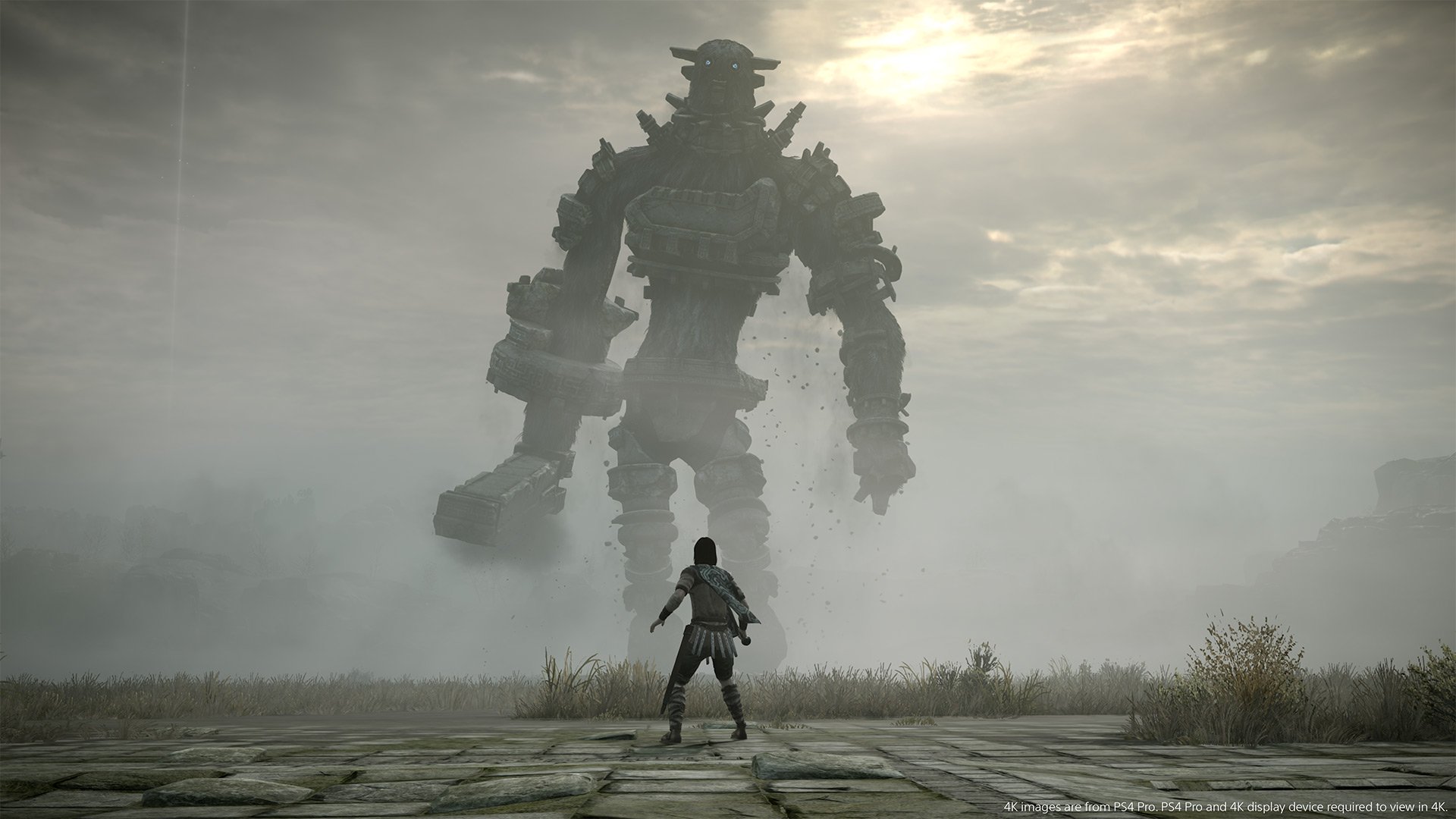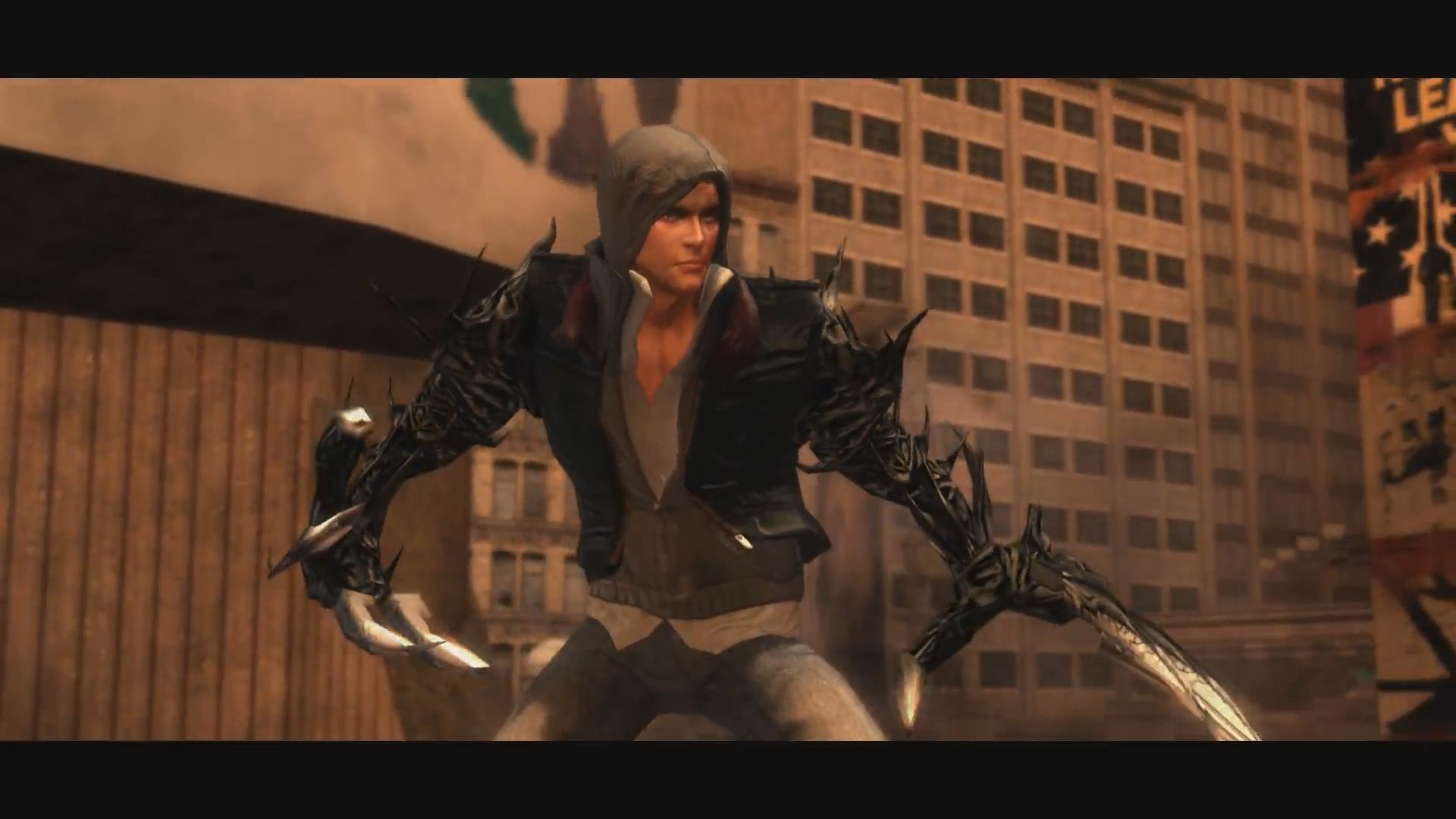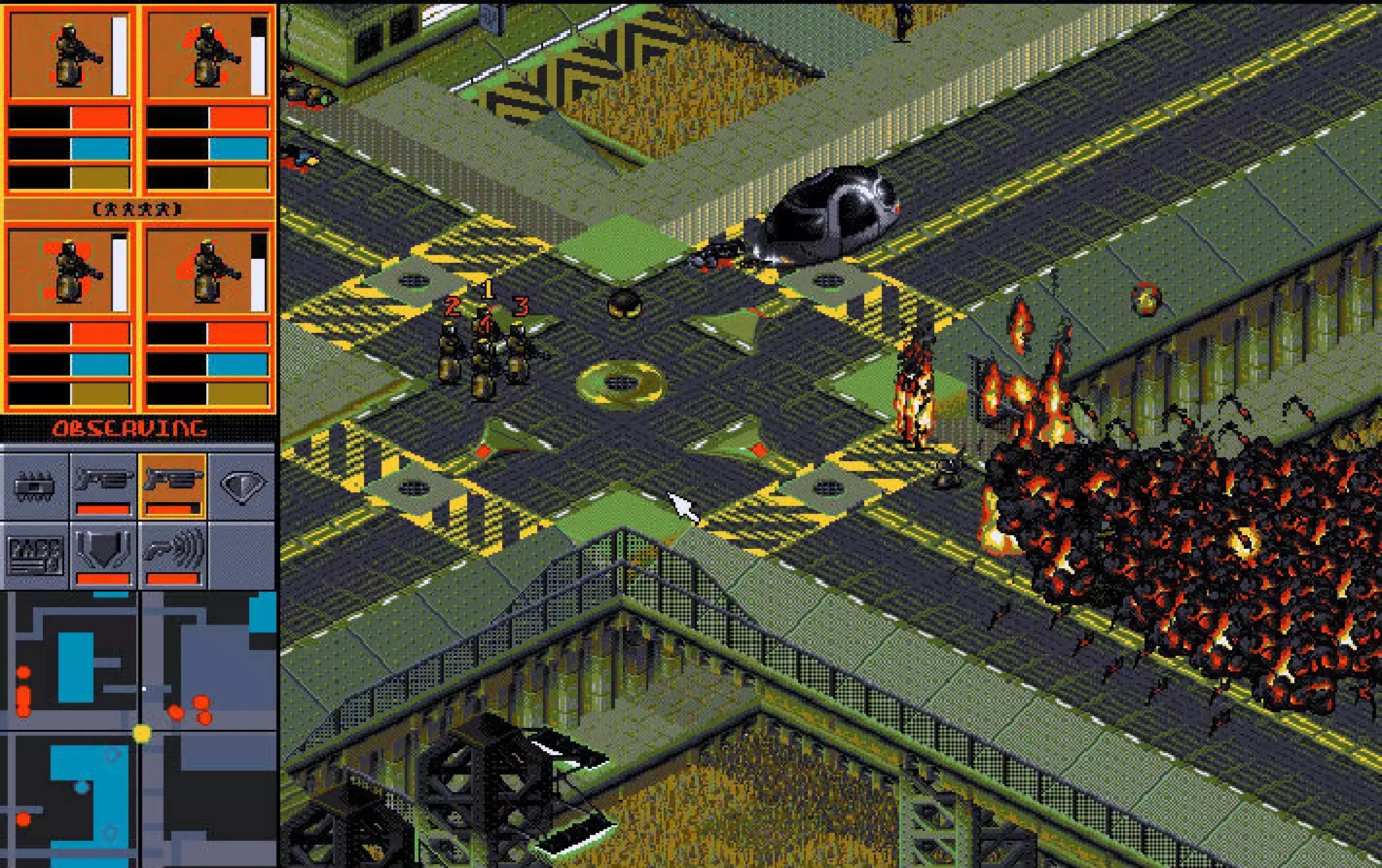There’s no way the 15 games included in this feature can be exhaustive. Video games as a medium, as an artform, is typified by boundary pushing. The 15 here are noteworthy for pushing things along, for genuinely innovating, and – in some cases – for being brave in how they told their story or the subject matter they tackled.
Max Payne
Max Payne raised the bar for cinematic action in video games, appropriating the style of John Woo’s gun fu movies. Of course, we can’t talk about Max Payne’s innovativeness without referencing its bullet time mechanic – an ability to transform shootouts into slomo bloodshed. Max Payne’s bullet time was clearly indebted to The Matrix, and whilst it wasn’t the first video game to feature bullet time it was the first to do it with such effortless swagger.
System Shock
The ways in which System Shock was ahead of the curve are numerous: it’s exploration of prescient themes centring on artificial intelligence, transhumanism, ascension, and the human soul is still grimly thought-provoking; its physics engine revolutionised how objects act in 3D spaces; its morally grey antagonist grounded its fantastical setting; it’s emphasis on player choice and options to avoid combat via ground-breaking hacking abilities. System Shock is an all-time classic, inspiring Prey, Dishonored, Portal, to name a few.
Outcast
A fully explorable open world appearing two years before Grand Theft Auto III isn’t why Outcast is ahead of its time. No, this 1999 sci-fi cult classic delivered immersion by the bucketload, far above anything that had come before. NPC conversation was integral to the narrative, but each had daily routines to follow, opinions on each other, and opinions on you the player. An early example of a reputation system, NPCs will help or hinder you based on how well you’ve treated them. Enemy soldiers are progressively weakened by lack of food or resources too, the result of activities you complete for the leaders of each region.
Red Dead Redemption 2
Much like Outcast some two decades prior, Red Dead Redemption 2 set new precedents for immersive open world story telling. It’s gorgeous grassland plains, swamps, and misty mountaintops encouraged horseback exploration; fast travel was not the optimal way to get around. Rockstar deliberately culled the pace of Red Dead’s sequel, stuffing the open world with a smorgasbord of side activities and random encounters. Open world games released today are struggling to reach the levels of freedom Red Dead Redemption 2 presented.
Mirror’s Edge
Flowstate is a remarkable thing when it happens in games. The sense of body and mind working in tandem, fluidly, uninterrupted. Games had toyed with parkour before Mirror’s Edge but none elicited the serene flowstate Mirror’s Edge did. This is in large part to its first-person perspective, it’s almost texture-less clean lines and minimal, distraction free colour palette switching between bright white and bold primary colours. Dying Light comes close, but the innovativeness of Mirror’s Edge is tough to beat.
Metal Gear Solid
An absolute genre-defining masterpiece, Metal Gear Solid changed perceptions of what video games could be via its unashamedly cinematic approach to storytelling, it’s ground-breaking stealth gameplay, and ingenious fourth wall breaking shenanigans. Never had a video game toyed with the player as much as Metal Gear Solid; etching Meryl’s codec frequency into the game’s physical CD case, or – most famously – the Psycho Mantis battle requiring players’ switch controller ports to evade his mind-reading ability.
Shadow of the Colossus

Originally released in 2005 at a time when video game contingent was still debating if the medium could be considered art. Contemplative, bleak, beautiful, befuddling Shadow of the Colossus put that contest to rest via minimal storytelling told ostensibly through environmental puzzles masquerading as boss battles. There really was nothing like it at the time. A wholly unique experience with an ending, like some of the world’s greatest art, wide open to interpretation.
Red Faction
Remarkably ground-breaking for its Geo-Mod technology was Red Faction. It’s incredible how much destruction developer Volition managed to build into its gameplay, and whilst there was a multiplayer component to the game the single player campaign was treated to this bar-raising destruction tech too. Players could reshape the world around them with unparalleled freedom. See a locked door? Blast a hole in the surrounding rock. Want to infiltrate a guarded building? Fashion underground tunnels with rocket launchers. Prior games included scripted destruction, but Red Faction was the first to grant players pure unscripted world-altering capabilities.
Shenmue
Sure, Shenmue’s stately slice of Japanese life divides fans and critics to this day, but the developer’s ambition for what they hoped would become a sprawling series was certainly ahead of its time. Introducing the concept of open world game design to mass audiences (well, Dreamcast players at least), Shenmue heightened immersion through its day and night cycles, NPCs with jobs and routines, and dynamic weather. The interactivity inherent in its detailed world cemented Shenmue as a trailblazer too, ranging from mundanely examining the objects of a kitchen drawer to hitting the arcades for some vintage game time.
Prototype

Prototype’s Alex Mercer is the perfect anti-hero. It’s as simple as that. So many powers and abilities are stuffed into his skillset that there was no more powerful a feeling possible in games than raising utter carnage in downtown Manhattan and barely feeling a scratch from an army desperate to stop you. In blending shapeshifting, superhero-esque aerial acrobatics, offensive and defensive body augmentations, thermal vision, guns, tanks, and helicopters, Radical Entertainment risked Prototype being a sludge of mechanics. Instead, Prototype is a blast; combining so many combat mechanics seamlessly truly was an achievement ahead of its time.
Battlezone
Never had a game merged first-person action, real-time strategy, base building, and tank simulation as cohesively as 1998’s Battlezone. Whilst the similar-in-scope Uprising: Join or Die released a year earlier it didn’t have the same sense of finesse that Activision’s effort exuded. Battlezone dripped in atmosphere, featured dynamic missions inside an engaging dual-perspective campaign, and – crucially given its melding of disparate genres – a sleek interface innovative for its simplicity.
RAGE
You can debate until you’re blue in the face on the memorability of RAGE. It brought legendary developer id Software back from the brink of mediocrity, but it’s shooting, premise, enemies, story – all middle-of-the-road at least. A solid 7/10. RAGE though had an ace up its sleeve: megatexturing. This tech wasn’t new at the time, but thanks to game engine id Tech 5 RAGE’s environment artists were able to build in an endless stream of unique textures. Dynamic scaling based on PC capability kept the game running at 60fps too; another feature prevalent nowadays but none-too-common back in 2011.
Syndicate

1993’s Syndicate put you in command of four trenchcoated, mirror-shaded cyborgs undertaking a corporation’s nefarious dealings via the trigger of a minigun. Gameplaywise, you’d take to the streets – early examples of living cities – to assassinate, coerce, rescue, or destroy, depending on your objective and whims. There was intelligence beneath the bloodshed too, a satirical mirror exposing the tunnel vision of rampant consumerism. Grand Theft Auto took these themes and ran with it, but Syndicate was the first to do it.
Far Cry 2
If Far Cry 2 were released today, it might be criticised for an overly minimalist approach to open world game design that’s become much more commonplace than it was back in 2008 when it originally released. Thing is, it’s Far Cry 2 that arguably started this trend. A true pinnacle of emergent gameplay, zones aren’t acquired like a shopping list and NPCs don’t tend to function as quest givers. Instead, it’s up to you to head into the bush a cause your own trouble, but beware as guns often malfunction, exploded vehicles cause rampant bushfires, healing is strictly limited. Far Cry 2 had the confidence here to blend FPS with survival mechanics, with Metal Gear Solid V, Fallout 4, and The Forest to name a few taking many leaves out of its book.
Silent Hill 2
Dealing with mature, taboo, brushed under the carpet subject matter in such visceral ways; intrinsically linking a character’s innermost desires and torment to gameplay, to monsters encountered; in crafting an atmosphere so noxious it chokes you – these are all reasons why Silent Hill 2 is an ahead of its time masterpiece, and stands the test of time some 22 years later. In a way, Silent Hill 2 is experimental; for one, its story is told extremely subtly. A very hands-off approach which many developers, plus Konami themselves, haven’t learned from.














